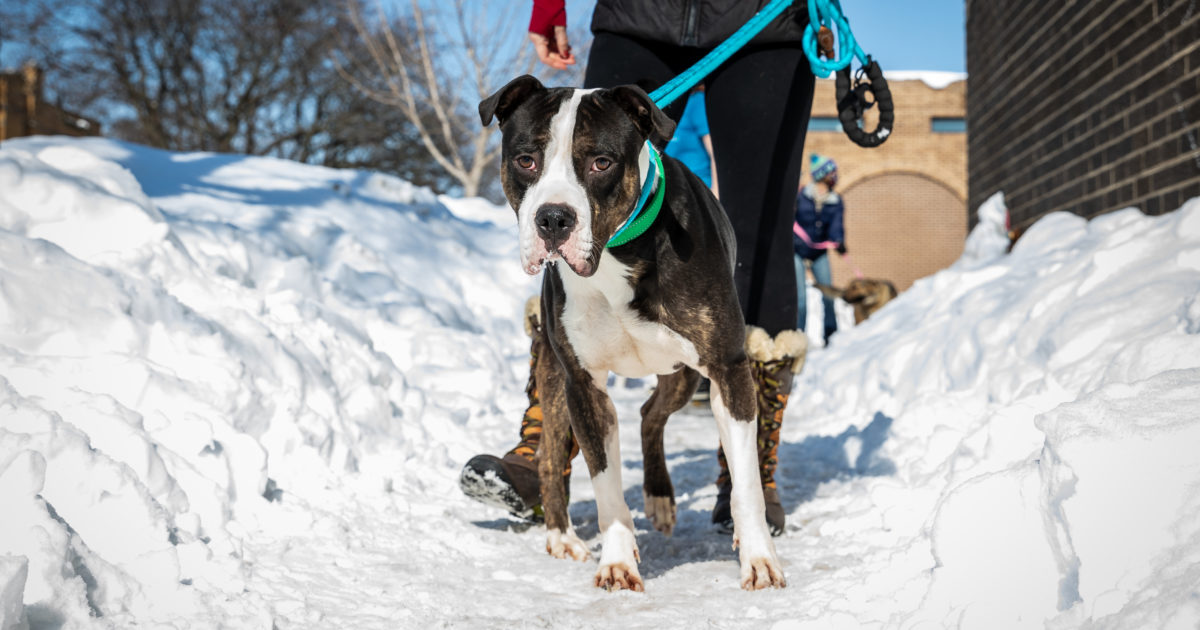
Bring pets inside. The best thing you can do for your pet is to bring them inside with you. While some breeds of dogs are more tolerant of cold weather than others, no pet should be left outside for long periods of time when it is below freezing (32ºF). You know your pet best, so be vigilant about watching for signs of their cold tolerance and limit outdoor activities accordingly.Check your car for cats. Our feline friends like to hide from this weather in car engines and/or wheel wells, so thump the hood of your car a few times and check your wheels for stowaways before you start the engine and take off.Provide a makeshift enclosure for outdoor animals. If you’ve noticed outdoor cats or other animals in your community suffering from the cold (shaking, curled up, etc.) and you are worried about them, create a makeshift shelter for them to stay warm in. A closed box or Rubbermaid bin with a cut out in the side, with towels or blankets, will help keep them safe in the frigid temperatures. Click here for example directions for cat shelters from Alley Cat Advocates and click here for more on what to do for dogs in the cold from Best Friends.Or consider opening your garage slightly (and leaving a heating pad or heat lamp on) to let cats in from the cold.Put a sweater on your pup. If you have a dog with a short coat, you can keep them a bit more insulated by putting a sweater or dog coat on them. Be sure the sweater and coat are completely dry for each outing, though, as damp or wet outerwear could actually make them chillier.Check paws. After outdoor activity, check your pet’s paws for any signs of cracking on the paw pads, redness between toes, or bleeding. Wipe them down after each outing, too, to remove any salt, ice, or chemicals.






